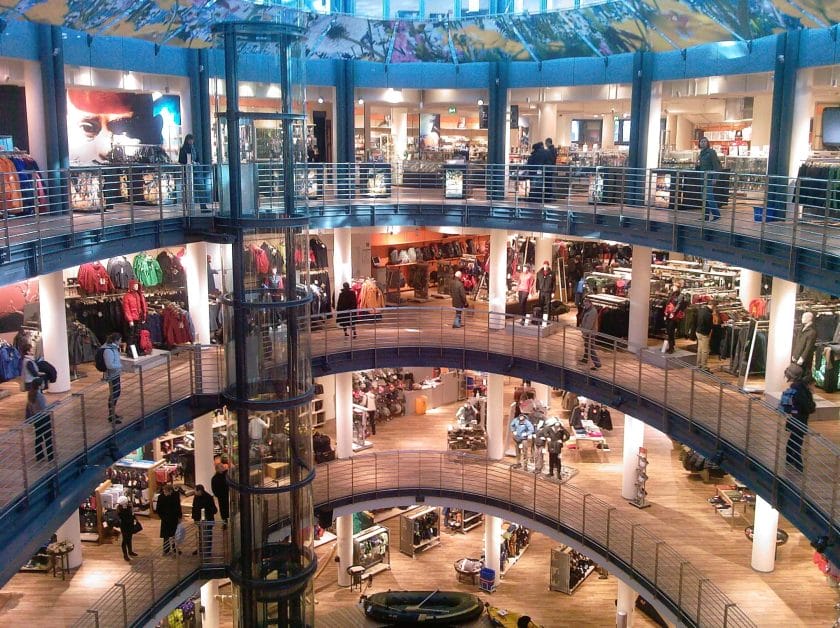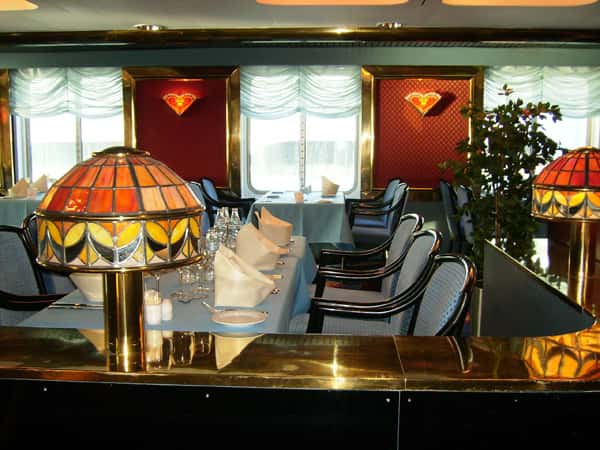Servicescape refers to the physical environment in which a service is delivered, including its design, layout, and ambient conditions. It plays a crucial role in shaping customer perceptions and experiences, and can have a significant impact on business success. Understanding servicescape is essential for businesses looking to create a positive and memorable customer experience.
What is Servicescape and Why is it Important in Service Design?
My Personal Encounter with Servicescape
As a regular customer of the local coffee shop, I couldn’t help but notice how much I enjoyed my experience there. The aroma of freshly brewed coffee wafting through the air, the cozy ambiance created by warm lighting, and comfortable seating arrangements made me feel at home. It was then that I realized that physical environment plays a crucial role in shaping customers’ experiences.
Servicescape refers to the physical environment where a service is delivered to customers. It includes all elements such as architecture, interior design, lighting, music, temperature, and other tangible aspects that impact customer behavior and perception.
The Importance of Servicescape in Service Design
In service design, servicescape plays a critical role in creating an immersive experience for customers. A well-designed servicescape can evoke positive emotions and influence customer behavior by:
– Creating a sense of comfort and familiarity
– Enhancing brand image and identity
– Increasing customer satisfaction and loyalty
– Encouraging repeat visits
Therefore, businesses need to pay attention to their servicescapes to ensure they create an optimal environment for their customers.
How Servicescape Affects Customer Behavior: Understanding the Impact of Physical Environment
The Psychology Behind Servicescape
The physical environment has a profound effect on human behavior. Studies have shown that people’s perceptions are influenced by their surroundings. For example, research has found that colors can affect mood; blue creates a calming effect while red evokes excitement.
Similarly, servicescapes can influence customer behavior by creating specific emotional responses. For instance:
– Warm lighting can create feelings of relaxation
– Bright colors can evoke energy and excitement
– Soft music can create feelings of comfort
Understanding these psychological factors enables businesses to design their servicescapes to evoke specific emotions and behaviors.
How Servicescape Affects Customer Perception
Servicescape can also influence how customers perceive a business. A well-designed servicescape can create a positive image of the brand, while a poorly designed one can do the opposite.
For example, if a restaurant has dim lighting, dirty floors, and uncomfortable seating arrangements, customers are likely to perceive it as low quality. On the other hand, if the same restaurant has bright lighting, clean floors, and comfortable seating arrangements, customers are more likely to perceive it as high quality.
Therefore, businesses need to ensure their servicescapes align with their brand image and identity to create positive customer perceptions.
The Elements of a Successful Servicescape: Key Components to Consider in Service Design
The Five Key Elements of Servicescape
A successful servicescape is one that aligns with the business’s goals and creates an optimal environment for its customers. The five key elements of servicescape include:
1. Ambient conditions: This includes temperature, lighting, noise level, and scent.
2. Spatial layout: This refers to how space is organized and arranged.
3. Functionality: This involves how well the servicescape supports service delivery.
4. Signage and symbols: This includes visual cues such as signs or logos that guide customers.
5. Decor: This refers to aesthetic elements such as artwork or furniture.
By considering these key elements in service design, businesses can create an effective servicescape that meets their unique needs.
Examples of Effective Servicescapes
Some examples of businesses with effective servicescapes include:
– Apple stores: Their sleek designs and modern aesthetics reflect their brand identity while creating an immersive experience for customers.
– Starbucks coffee shops: With warm lighting, comfortable seating arrangements, and cozy decor elements like fireplaces or bookshelves create a welcoming atmosphere.
– Disney theme parks: Their immersive environments and attention to detail create a sense of wonder and excitement for visitors.
These businesses’ servicescapes align with their brand identities and create an optimal environment for their customers, leading to increased customer satisfaction and loyalty.
Why Considering Servicescape is Crucial for Business Success: The Importance of Physical Environment in Service Design
The Impact of Servicescape on Customer Satisfaction
Research has shown that servicescape significantly impacts customer satisfaction. A well-designed servicescape can increase customer satisfaction by creating a positive emotional response, while a poorly designed one can decrease it.
For example, if a hotel room has uncomfortable beds, poor lighting, or noisy air conditioning, customers are likely to be dissatisfied. On the other hand, if the same hotel room has comfortable beds, soft lighting, and quiet air conditioning, customers are more likely to be satisfied.
Therefore, businesses need to consider servicescape in service design to ensure they create an optimal environment for their customers’ satisfaction.
The Relationship Between Servicescape and Customer Loyalty
Servicescape also plays a crucial role in building customer loyalty. A well-designed servicescape creates positive emotions that lead to repeat visits and increased loyalty.
For instance, if a restaurant’s ambiance makes diners feel comfortable and relaxed, they are more likely to return. Similarly, if a retail store’s layout is easy to navigate and aesthetically pleasing, customers are more likely to come back.
Therefore, businesses need to prioritize creating an effective servicescape that fosters customer loyalty through positive experiences.
Servicescape vs. Physical Environment: Understanding the Differences and Similarities
The Definition of Servicescape vs. Physical Environment
While often used interchangeably, there is a difference between servicescape and physical environment. Physical environment refers only to tangible elements such as architecture, interior design, and decor. Servicescape includes all tangible and intangible elements that impact customer behavior, such as lighting, scent, and music.
The Similarities Between Servicescape and Physical Environment
Despite their differences, both servicescape and physical environment play a crucial role in shaping customer behavior. Both influence customers’ perceptions of a business’s quality and brand identity.
Therefore, businesses need to consider both servicescape and physical environment in service design to create an optimal environment for their customers.
Adapting Servicescape for Different Types of Businesses: How to Tailor Your Physical Environment to Meet Your Customers’ Needs
The Importance of Adapting Servicescape for Different Businesses
Different businesses have unique needs when it comes to servicescape. For example, a hospital requires a different servicescape than a retail store or restaurant. Therefore, businesses need to adapt their servicescapes to meet their specific needs.
How to Adapt Servicescape for Different Businesses
To adapt servicescape for different businesses, companies should consider:
– The business’s goals: The servicescape should align with the business’s goals.
– The target audience: The servicescape should cater to the target audience’s preferences.
– The industry standards: The servicescape should meet industry standards.
– The competition: The servicescape should differentiate from competitors while still meeting customer expectations.
By considering these factors in service design, businesses can tailor their physical environments to meet their customers’ needs effectively.
The Role of Lighting in Creating a Positive Servicescape Experience for Customers
The Impact of Lighting on Customer Behavior
Lighting is one of the most critical elements of servicescape because it significantly impacts customer behavior. Research has shown that lighting can affect mood and emotions; therefore, it can influence how customers perceive a business.
For example, warm lighting creates a cozy and comfortable atmosphere, while bright lighting evokes excitement and energy. On the other hand, dim lighting can create feelings of relaxation or even sadness.
How to Use Lighting in Servicescape Design
To create a positive servicescape experience for customers, businesses should consider:
– The type of lighting: Warm lighting is ideal for creating a comfortable atmosphere, while bright lighting is suitable for creating an energetic environment.
– The placement of lighting: Lighting should be strategically placed to highlight essential areas or create a specific ambiance.
– The color of lighting: Different colors can evoke different emotions; therefore, businesses should choose colors that align with their brand identity and goals.
By considering these factors in service design, businesses can use lighting effectively to create a positive servicescape experience for their customers.
Using Sound to Enhance the Servicescape Experience: How Music and Noise Impact Customer Behavior
The Impact of Music on Customer Behavior
Music is another critical element of servicescape that significantly impacts customer behavior. Research has shown that music can affect mood and emotions, leading to changes in behavior.
For example, slow music can create feelings of relaxation, while fast-paced music can evoke excitement. Similarly, loud music can increase energy levels, while soft music can promote calmness.
How to Use Music in Servicescape Design
To use music effectively in service design, businesses should consider:
– The genre of music: Different genres evoke different emotions; therefore, businesses should choose music that aligns with their brand identity and goals.
– The volume of music: Music volume should be appropriate for the business’s environment; it shouldn’t be too loud or too soft.
– The timing of music: Music should be played at appropriate times; for example, slow music during dinner hours and upbeat music during peak hours.
By considering these factors in service design, businesses can use music effectively to enhance the servicescape experience for their customers.
Successful Examples of Servicescapes in the Hospitality Industry: What Works and Why?
The Importance of Servicescape in the Hospitality Industry
The hospitality industry relies heavily on creating a positive customer experience. Therefore, servicescape plays a crucial role in shaping customer behavior and perception.
Successful Examples of Servicescapes in the Hospitality Industry
Some successful examples of servicescapes in the hospitality industry include:
– The Ritz-Carlton hotels: With luxurious decor, warm lighting, and personalized service, they create an immersive experience that aligns with their brand identity.
– Four Seasons hotels: With elegant aesthetics, comfortable seating arrangements, and attentive staff, they create a welcoming environment that fosters customer loyalty.
– Hard Rock Cafe restaurants: With rock-and-roll-themed decor, loud music, and energetic atmosphere, they create an exciting environment that appeals to their target audience.
These businesses’ servicescapes align with their brand identities and create optimal environments for their customers’ satisfaction.
Incorporating Technology into Servicescape Design: How to Create a High-Tech, High-Touch Customer Experience
The Role of Technology in Service Design
Technology has revolutionized service design by enabling businesses to create more personalized experiences for customers. By incorporating technology into servicescape design, businesses can create a high-tech, high-touch customer experience that fosters loyalty and satisfaction.
How to Incorporate Technology into Servicescape Design
To incorporate technology effectively into service design, businesses should consider:
– The type of technology: Businesses should choose technology that aligns with their brand identity and goals.
– The placement of technology: Technology should be strategically placed to enhance the customer experience without being intrusive.
– The level of personalization: Technology should be used to create a personalized experience for customers.
By considering these factors in service design, businesses can incorporate technology effectively into servicescape design and create a high-tech, high-touch customer experience.
Cultural Differences and Servicescape Design: How Cultural Factors Influence Physical Environment Preferences
The Impact of Culture on Servicescape Design
Cultural differences significantly impact physical environment preferences. What works in one culture may not work in another. Therefore, businesses need to consider cultural factors when designing their servicescapes.
How to Consider Cultural Factors in Servicescape Design
To consider cultural factors effectively in service design, businesses should:
– Research the target audience’s culture: Businesses should research their target audience’s culture to understand their preferences and expectations.
– Adapt servicescape elements accordingly: Based on research findings, businesses should adapt servicescape elements such as decor, lighting, music, or color schemes to align with cultural preferences.
– Avoid stereotypes: Businesses should avoid stereotyping cultures and instead focus on creating an authentic experience that respects different cultures.
By considering these factors in service design, businesses can create servicescapes that cater to different cultural preferences effectively.
Mistakes to Avoid When Designing a Servicescape: Common Pitfalls and How to Overcome Them
Common Mistakes in Servicescape Design
Some common mistakes businesses make when designing their servicescapes include:
– Failing to align with brand identity
– Ignoring customer feedback
– Neglecting maintenance and upkeep
– Overcomplicating the design
These mistakes can lead to negative customer perceptions and decreased satisfaction levels.
How to Overcome Common Mistakes in Servicescape Design
To overcome common mistakes in service design, businesses should:
– Ensure alignment with brand identity
– Listen to customer feedback
– Prioritize maintenance and upkeep
– Simplify the design
By avoiding these common mistakes, businesses can create effective servicescapes that foster customer satisfaction and loyalty.
The Employee Factor in Creating a Positive Servicescape Experience for Customers: Why Staff Training Matters
The Role of Employees in Servicescape Design
Employees play a crucial role in creating a positive servicescape experience for customers. They are the face of the business and can significantly impact how customers perceive it.
Why Staff Training Matters
Staff training is essential to ensure employees provide high-quality service that aligns with the business’s goals and brand identity. By providing comprehensive training, businesses can ensure their employees:
– Understand the business’s mission and values
– Know how to handle customer complaints or issues
– Provide personalized service
– Create a positive atmosphere
Therefore, staff training is critical to creating an effective servicescape that fosters customer satisfaction and loyalty.
The Impact of Business Size on the Importance of Effective Servicescape Design
The Importance of Servicescape Design for Small Businesses
Effective servicescape design is crucial for small businesses as they rely heavily on creating positive customer experiences to compete with larger companies. A well-designed servicescape can help small businesses differentiate themselves from competitors while fostering customer loyalty.
The Importance of Servicescape Design for Large Businesses
While large businesses may have more resources to invest in servicescape design, effective design remains critical. A poorly designed servicescape can lead
In conclusion, servicescape refers to the physical environment in which a service is delivered. It includes everything from the decor and layout of a space to the behavior of employees. A well-designed servicescape can enhance customer satisfaction and loyalty. If you’re interested in improving your business’s servicescape, don’t hesitate to get in touch with us. Our AI services can help you create a welcoming and functional environment for your customers. Let’s work together to take your business to the next level!

What is the meaning of servicescape?
The term “servicescape” was created in the 1980s and refers to the physical environment in which a service is provided and where interactions between the seller and customer take place, as well as any physical objects that help facilitate the service experience.
What is an example of a servicescape?
Creating a unique servicescape can help businesses stand out from their competitors, as demonstrated by Starbucks. The popular coffee chain strives to provide a comfortable and welcoming atmosphere for their customers, almost like a second home.

What are the three elements of servicescape?
The servicescape model includes three components that contribute to the overall environment: ambient factors such as temperature, air quality, noise level, music, and scent; arrangement and function factors such as furniture, equipment, and layout; and sign, symbol, and artifact factors.
What are the five key elements of servicescape?
The servicescape encompasses both the exterior and interior of a facility, including its surrounding environment, design, equipment, and layout. In addition, it includes ambient conditions such as air quality, temperature, and lighting.
What is servicescape and it important?
The servicescape refers to the physical appearance of an organization and can play a crucial role in shaping customers’ first impressions or expectations. It is essentially a visual representation of the intangible service provided by the organization.
What are the examples of service service?
A service refers to an action or benefit that someone, a business, or a government organization is willing to pay for. Some instances of services include services offered by barbers, doctors, lawyers, mechanics, banks, insurance companies, and other similar entities.









